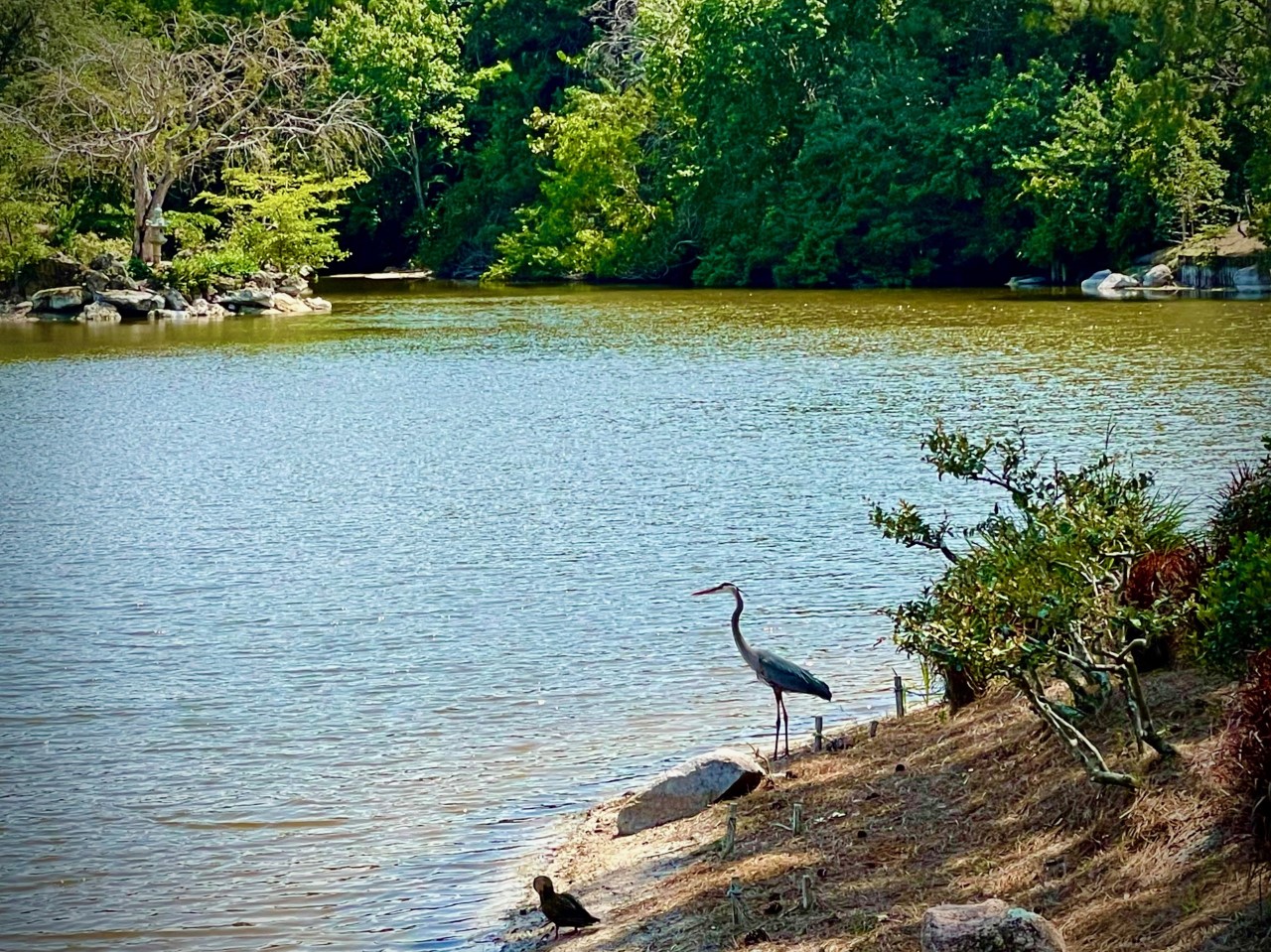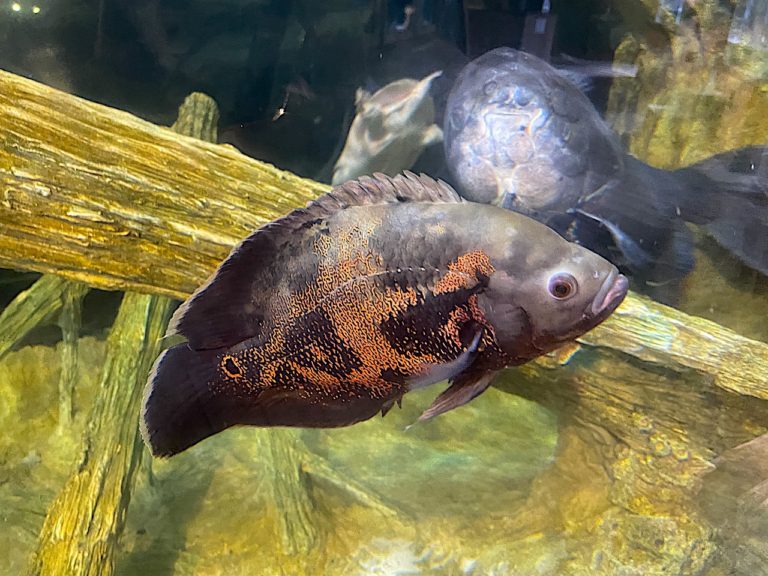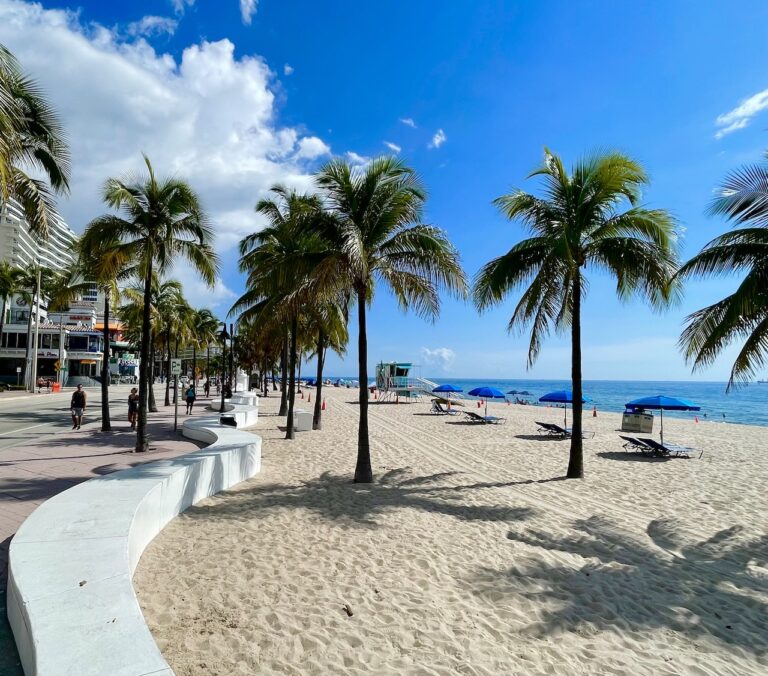A visit to the Morikami Museum & Japanese Gardens made me feel like I had traveled halfway around the world. Traveling on I-95 from Stuart to Delray Beach, Florida, heightened my stress level (I felt like I was on Germany’s autobahn). When I arrived at my location, I started to feel relaxed. I was in one of the most beautiful gardens in the world. Not only did the landscapes blend well with the beautifully manicured gardens, but it was as if the entire garden was designed with my comfort in mind.
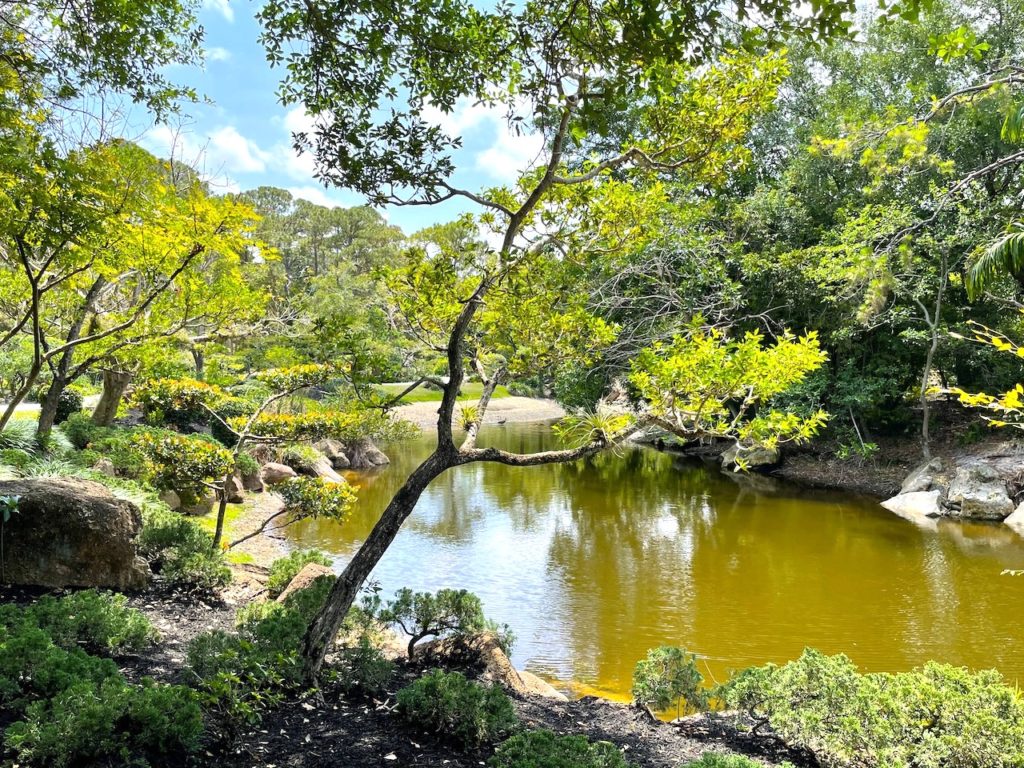
The Morikami Museum and Japanese Gardens has been a center for Japanese art and culture in South Florida since opening in 1977. Enjoy exhibits of Japanese art, or have a tea ceremony in an authentic tea house. The Cornell Cafe serves traditional Japanese fare, and the Morikami has a library, a theatre, and a house representing aspects of Japanese life today. There’s so much to see at Morikami, and something new with each visit, with ever-changing exhibits and gardens.
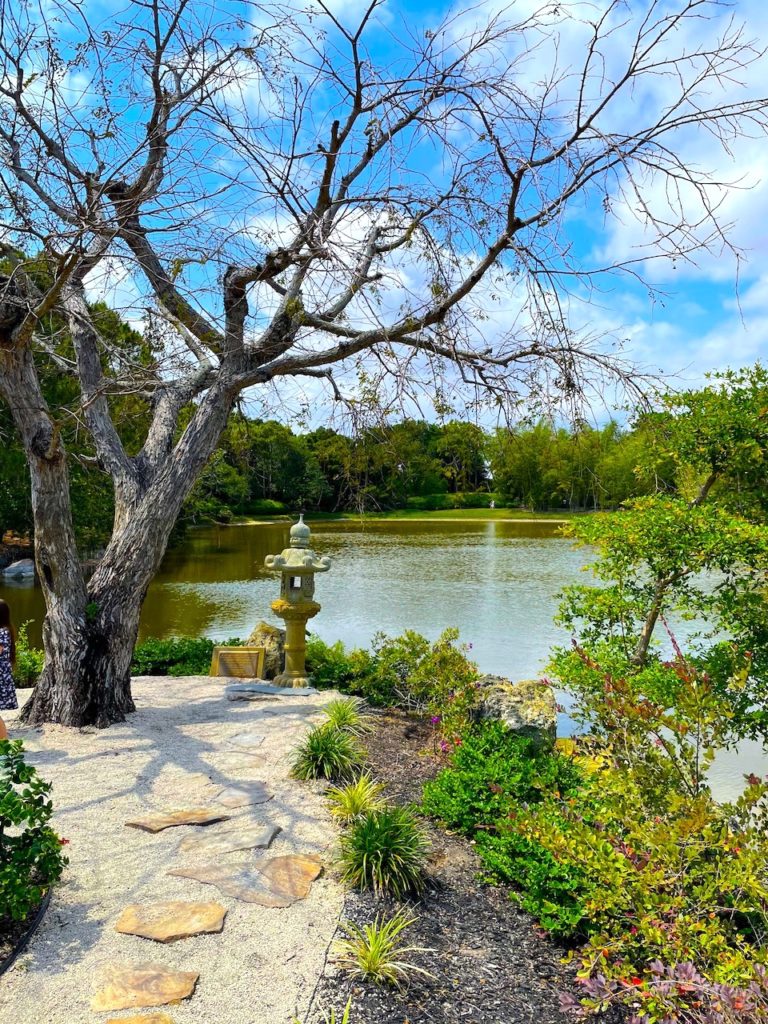
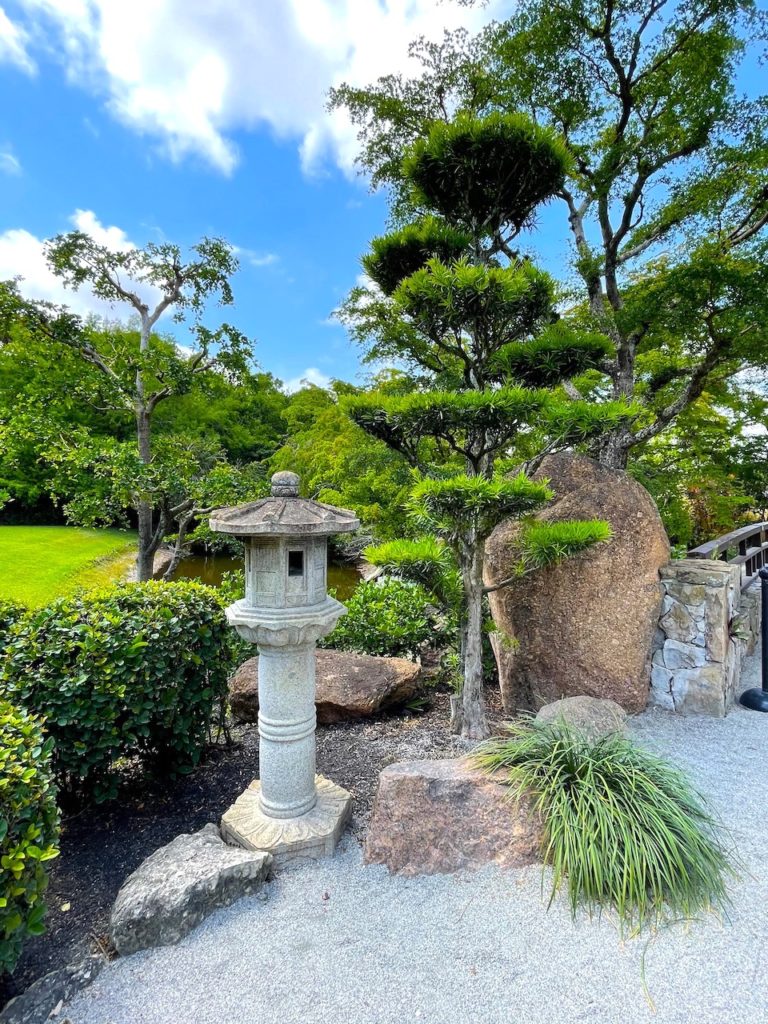
But first! A History Lesson
Yamato Colony: Pioneering Japanese in Florida
The Yamato Colony was a small community of Japanese farmers that came to the area in the early 1900s. Yamato was an ancient name for Japan. The colony’s farming was ultimately unsustainable due to competition from Cuban pineapples and early settlers leaving for greener pastures. The United States government confiscated land still owned by Japanese settlers for a military installation. One of the remaining settlers, George Sukeji Morikami, donated his land to Palm Beach County with the wish for it to become a park to preserve the memory of the Yamato Colony.

Wisdom Ring (Chie no Wa)
The Wisdom Ring is a replica of a 500-year-old lantern that stands beside Miyazu Bay in Japan. It works as a lighthouse. If you place a candle inside with paper covering both sides of the circle, it emits a soft, diffused light that guides sailors as they pass through the bay. The original Wisdom Ring stands at a temple dedicated to the Buddhist deity of Wisdom. Everybody I saw was dropping coins in the ring, so I decided to give it a try. Was it wise to do so? Hmmmmmm! Only time will tell.
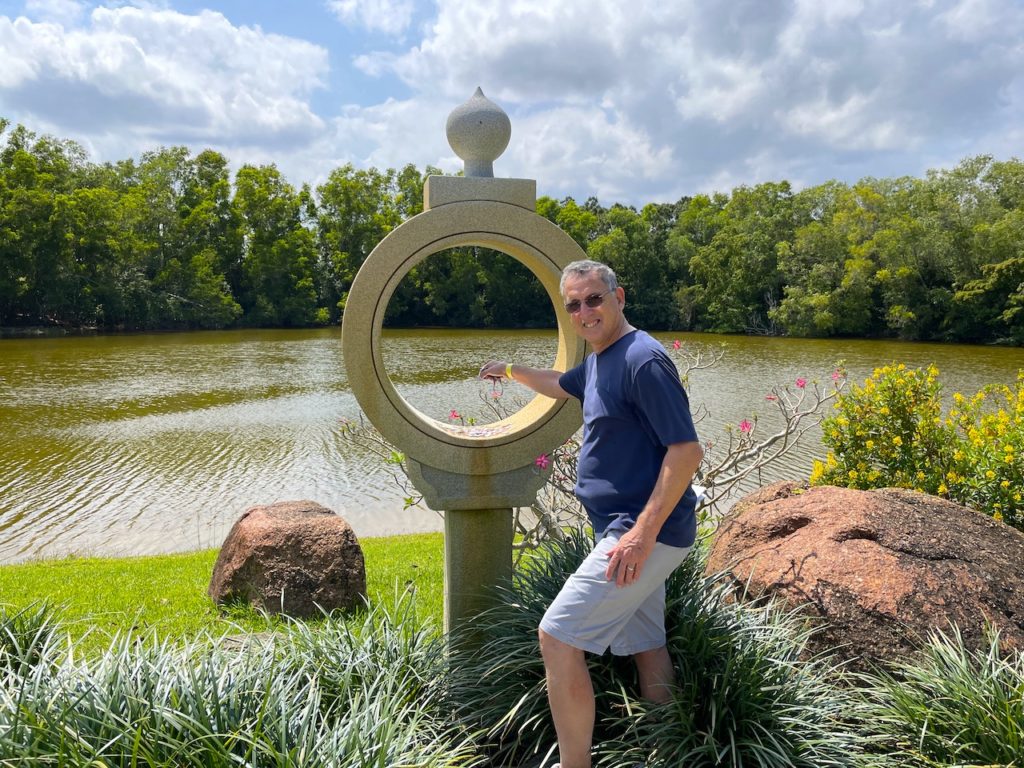
Garden of the Drops of Dew
Roji-en Garden of the Drops of Dew celebrates beauty and the cycles of regeneration that define the world around us, all evoked by a single dewdrop. While there are elements of the garden with some historical, technical, and aesthetic explanations, such information will enhance, not overshadow, your experience, which is ultimately one of personal insight, discovery, and invigoration. Following the path will allow you to blend into six distinct gardens. Its gardens are inspired by, but are not replicas of, significant gardens of Japan.
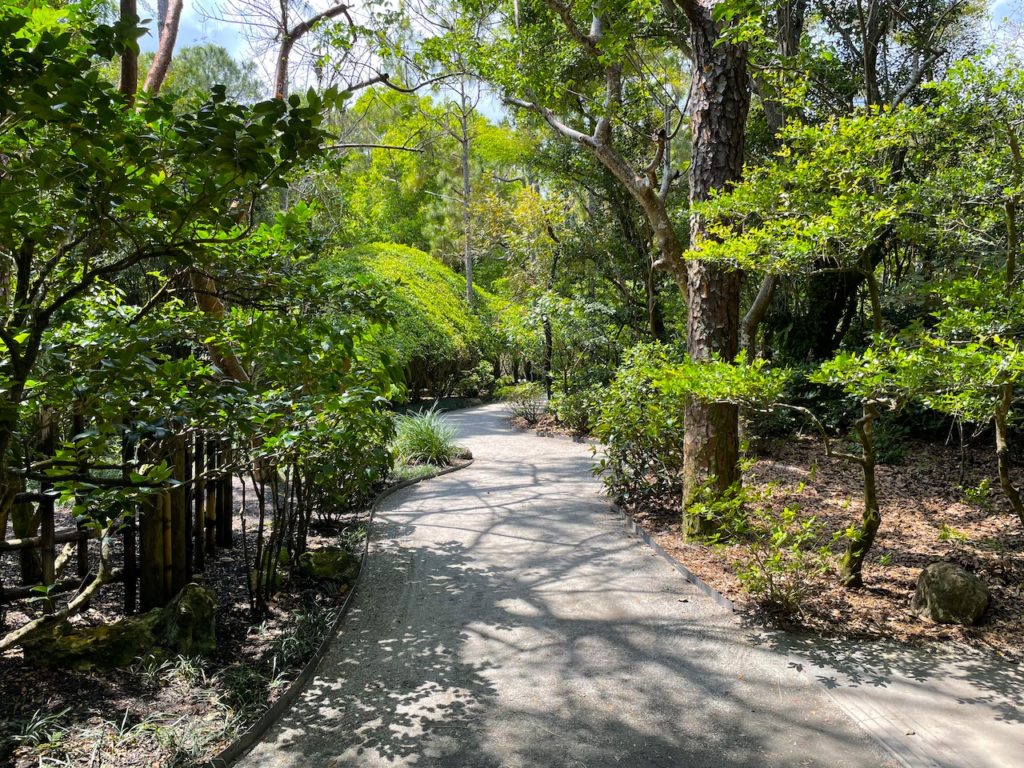
Take a Walk across the James and Hazel Gates Woodruff Memorial Bridge, which marks the entrance to the site’s Roji-en (or Garden of the Drops of Dew), featuring six distinct gardens inspired by historically significant gardens in Japan. The bridge symbolizes the link between Japan & Florida that Morikami provides. They can also embody the bridges between people, cultures, and time. So, we crossed the bridge to enter the gardens to start our tour.
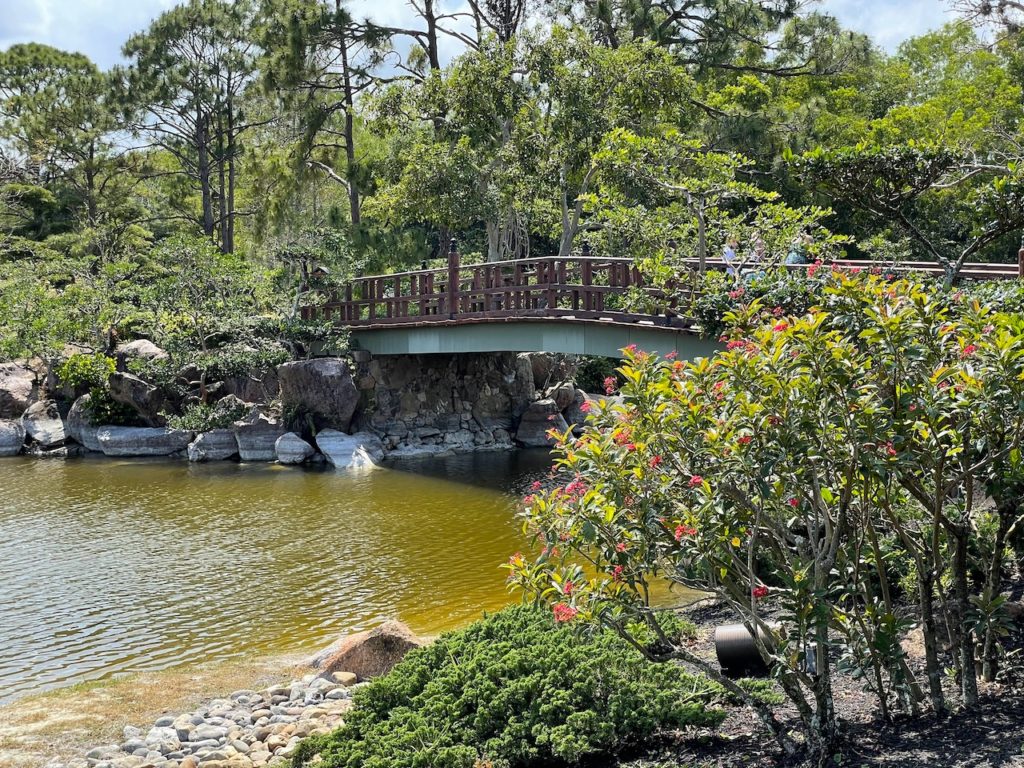
Strolling along the path brought a feeling of serenity and well-being. The gardens reflect major periods of Japanese garden design, from the eighth to the 20th century. The design allows the gardens to flow together as one. More than 16 acres of lush Japanese gardens await at the Morikami with paths to wander, resting areas, and lakes teeming with wildlife.

Shinden Garden
Imagine gliding on a boat on the lake. Sit and listen to the birds and the breeze. Nearby, you can hear the sound of a waterfall. The Shinden Garden is intended to bring a sense of calm. This is achieved with spring-fed ponds, lakes, islands, waterfalls, and an appreciation of nature. Initially, Shinden Gardens were designed for viewing from boats.
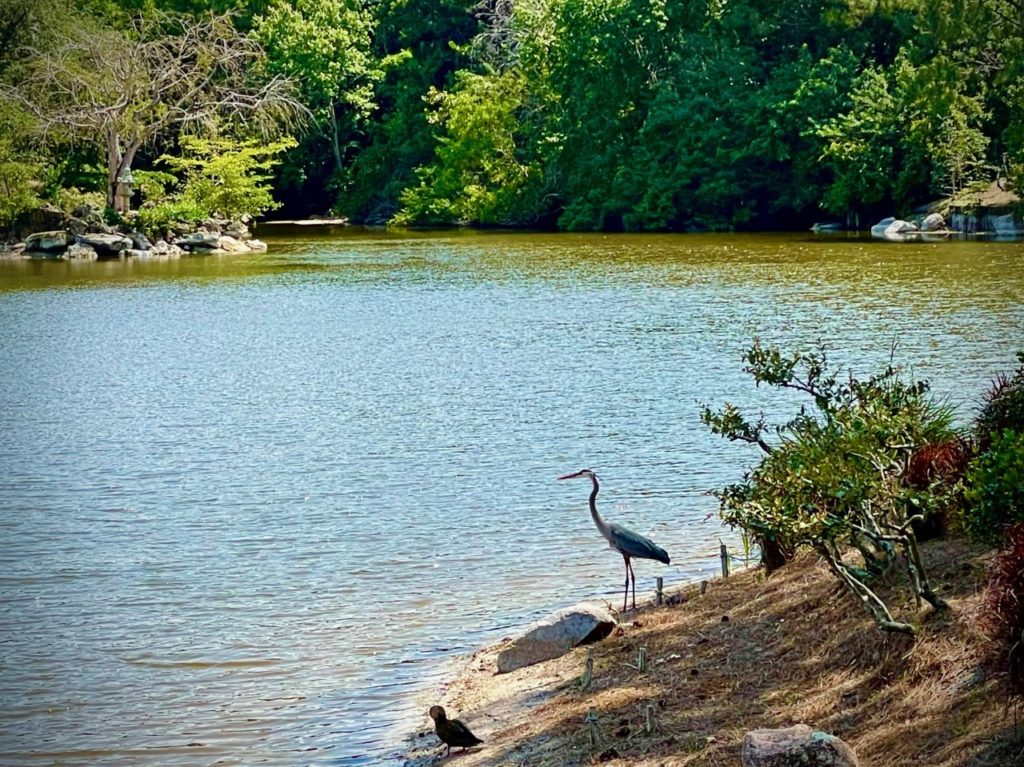
The Ancient Gate (Kodai-mon)
The Ancient Gate is inspired by the entrances of the large mansions of high-ranking samurai during the Edo Period (1600 – 1868). This gate is made out of Japanese cypress. There was a breeze, so we stopped to the sound of bamboo stalks knocking against each other. It reminded me of the wind chimes on my back porch.

Paradise Garden
The Paradise Garden represents the pure land. As you stroll through the path, you will notice how the gardens blend into one another as you move from the Bamboo Grove to the Paradise Garden.
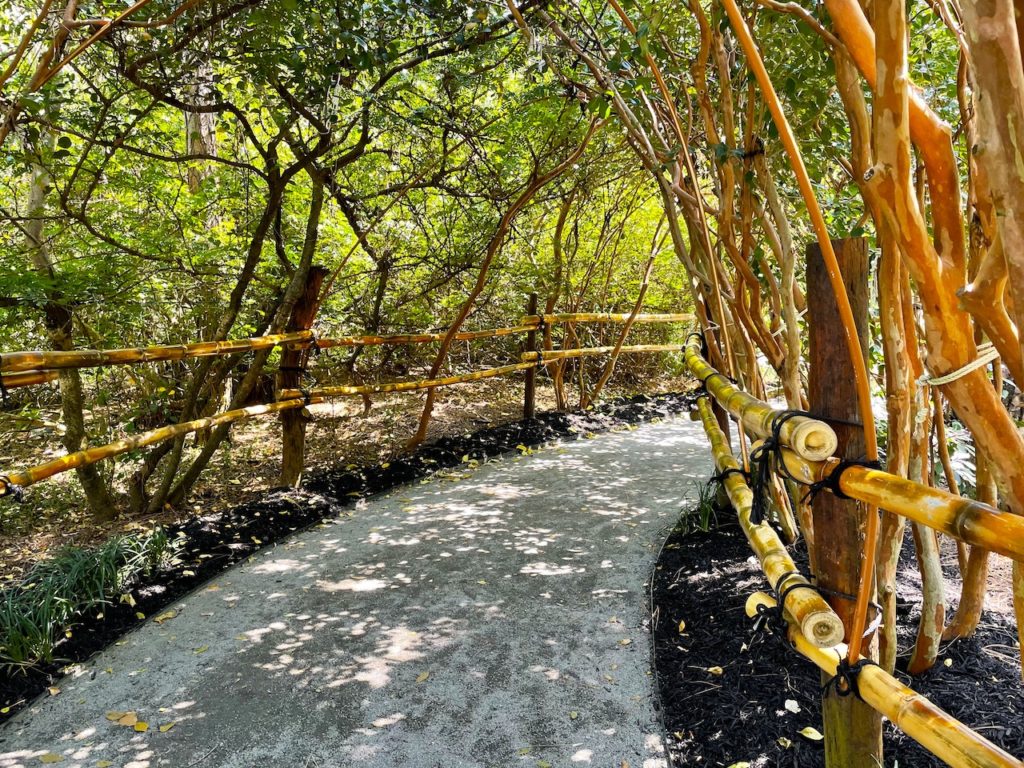
Deer Chaser (Shishi Odoshi)
The Deer Chaser consists of a swinging bamboo arm that collects water. When filled, it strikes a rock below. With a steady stream of water, the top part of the bamboo fills with water, then dumps it, creating a gentle hollow ‘doink’ sound when it rebounds. Hopefully, the sound of the bamboo striking the stone scares critters that have wandered into the garden. It is used in the garden to focus on the quietness between the rhythmic clicking.
The video below shows how this works.
Early Rock Garden
Chinese landscape paintings are the inspiration for The Early Rock Gardens and are inspired by Chinese landscape paintings. They depicted water cascading from distant peaks into the lake or ocean. Often, such gardens were in imitation, not of nature directly, but of landscape ink paintings that existed during the 12th and 13th centuries. The same kinds of angular forms seen in the Chinese landscapes of such paintings can also be seen in the early Japanese rock gardens.

Hiraniwa Flat Garden
Our next stop was the flat garden. In a garden such as this one, the designer works to balance the flat planes of the ground with the volume of stones, clipped shrubbery, and trees. These gardens borrow scenery from their surroundings and visually incorporate outside elements. The flat areas in the foreground are usually made of gravel, sometimes sand or pebbles, that symbolize water and movement, often being raked into various patterns. The minimalism used in this style of garden is calming and pleasing. One that also introduces more plant varieties toward the back of the garden scene, framing it.
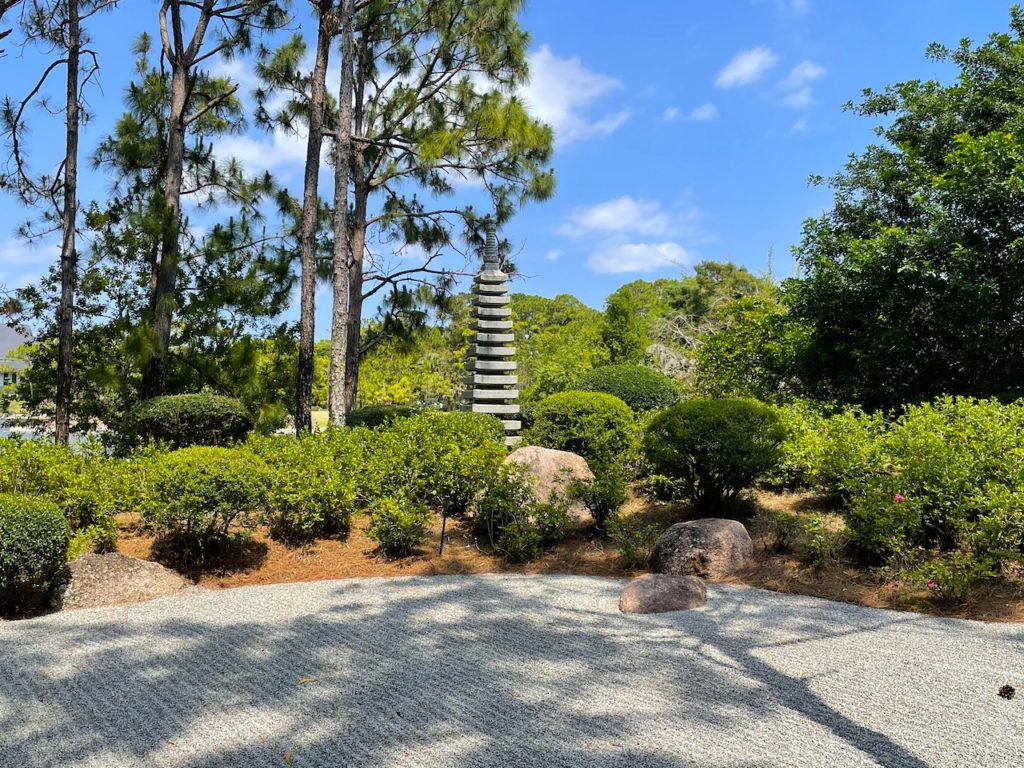
Modern Romantic Garden
The Modern Romantic Garden uses the natural approach, in terms of space and the designer’s choice of plants. This garden presents a lighter, more open feeling, freer in its choice of plantings, recalling the “love of nature”. Garden designers use nature for inspiration. There are many paths to wander here, some narrow and steep. So, if you feel adventurous, go exploring. For the gentler, more accessible way, stay on the wider paths.
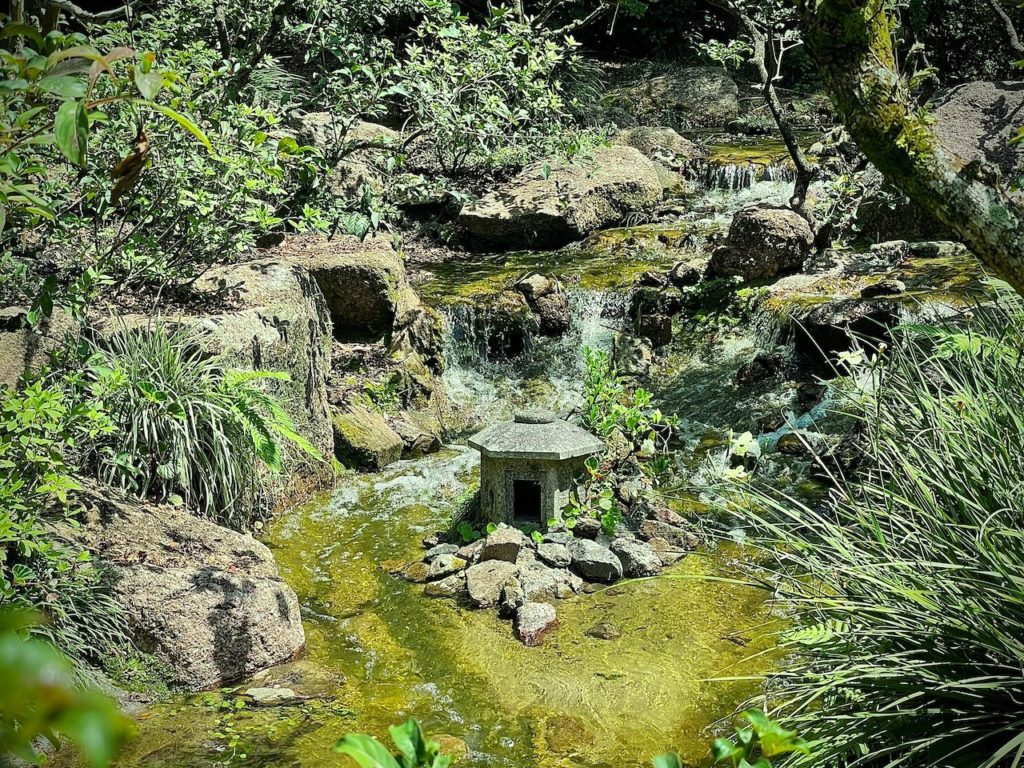
Contemplation Pavilion
The Contemplation Pavilion is an inviting retreat to stop and take a breath. This marks the halfway point of the journey. Pavilions are a part of a Japanese garden. Rustic open pavilions along the garden paths provide places for rest and contemplation and offer carefully framed views of the garden. These structures also serve different purposes during celebrations and upcoming events.
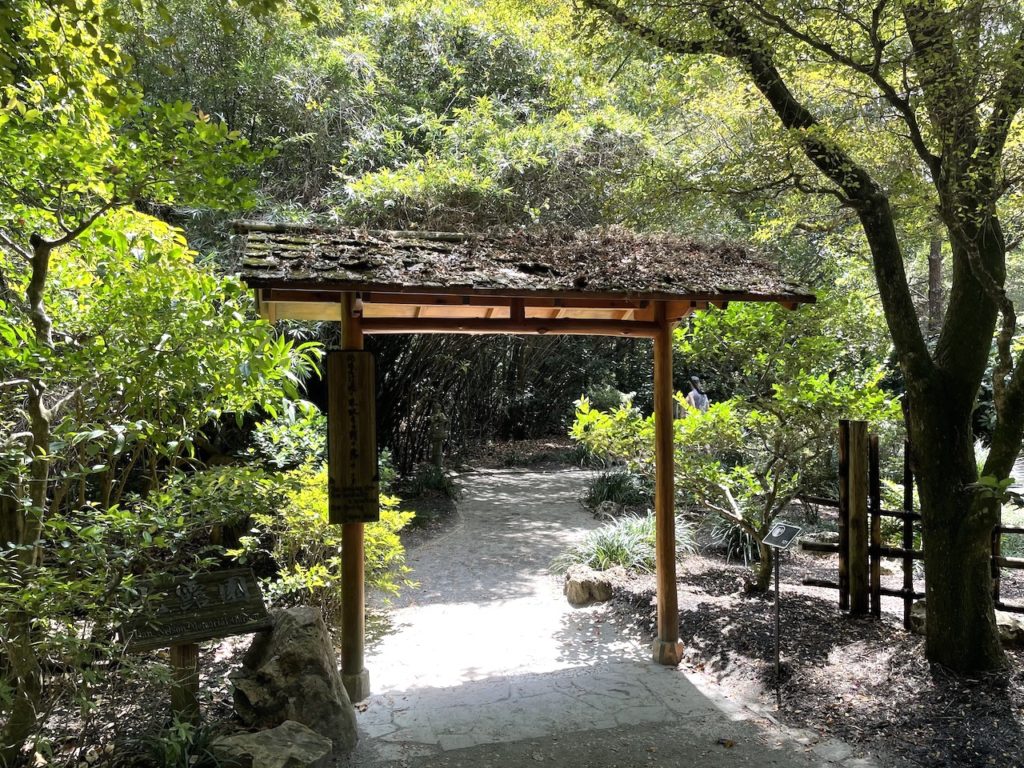
Yamato Island
Yamato Island was once the site of Yamato-kan, the original Morikami Museum building. The island has been redesigned into a modern/contemporary garden emphasizing the relationship between interior and exterior spaces. This is a perfect area for spotting colorful koi fish and turtles. Many folks have their picture taken at the rushing waterfall. This is also the site of Morikami’s premier bonsai collection.
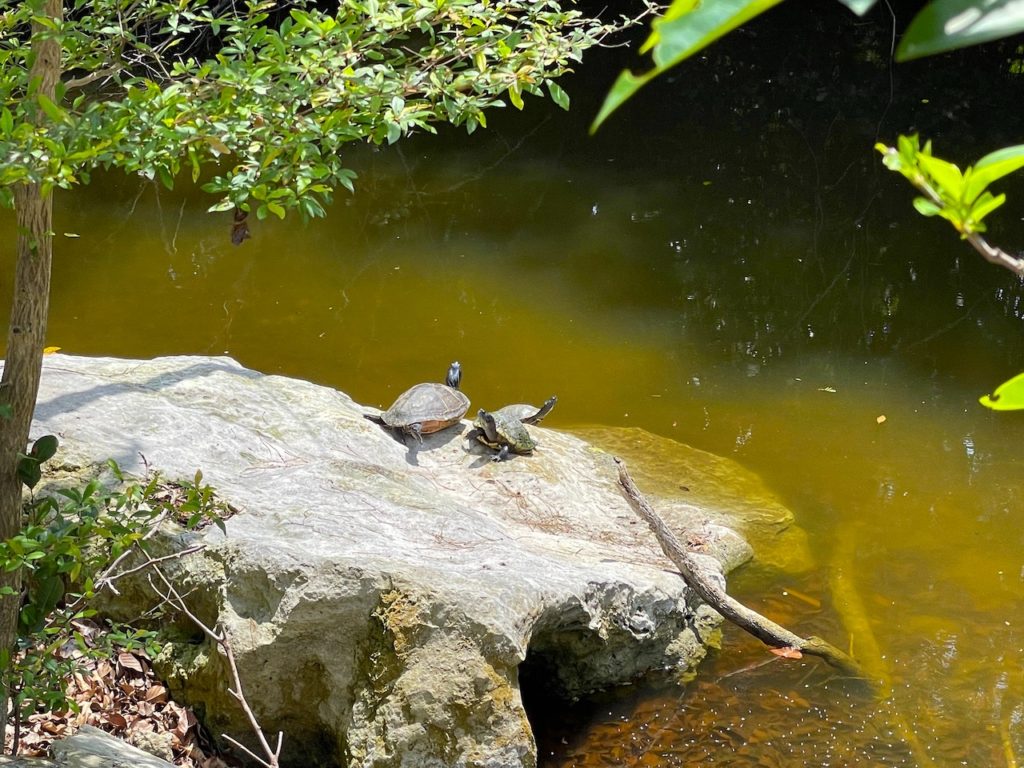


The Gardens’ Instagram Popularity
The Morikami Gardens is popular with photographers and consistently makes the list of Palm Beach County’s most Instagramable locations. It’s also a popular location for fashion shoots. Amy must have thought I was nuts when I saw her with her red parasol and asked if I could take her picture. She kindly obliged.

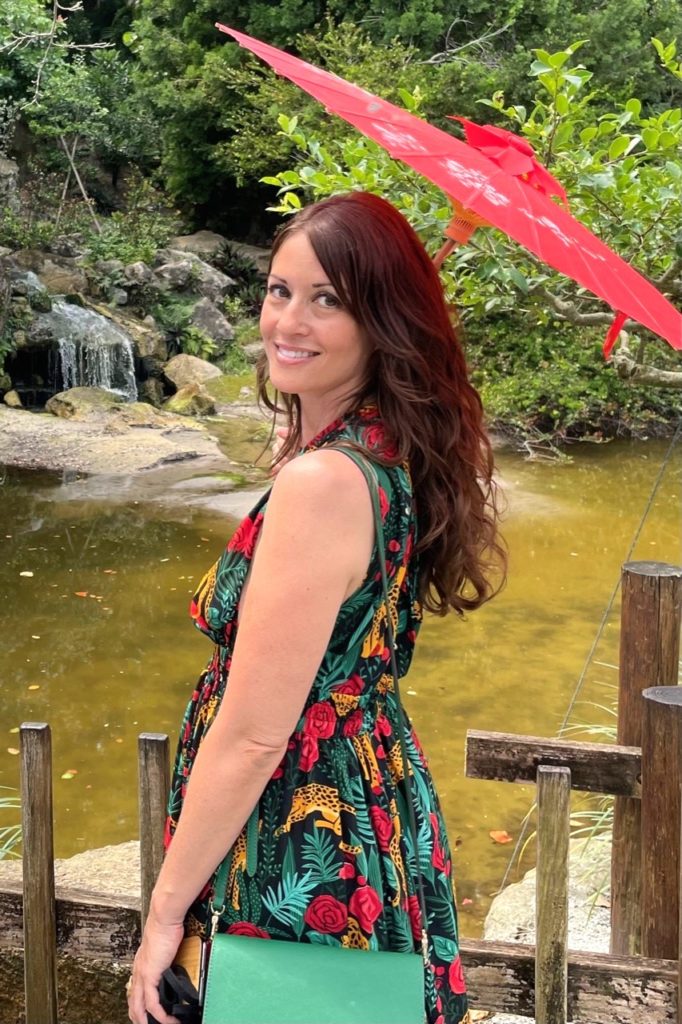
Bonsai Garden
On Yamato Island, we also found the Bonsai Garden. These dwarfs are ornamental trees or shrubs grown in a pot and artificially prevented from reaching their regular size. The art of bonsai design is to shape a tree through various techniques so it represents but does not duplicate trees in nature. You can explore this ancient art at the Morikami Bonsai Exhibit, one of the world’s best exhibits of bonsai trees.

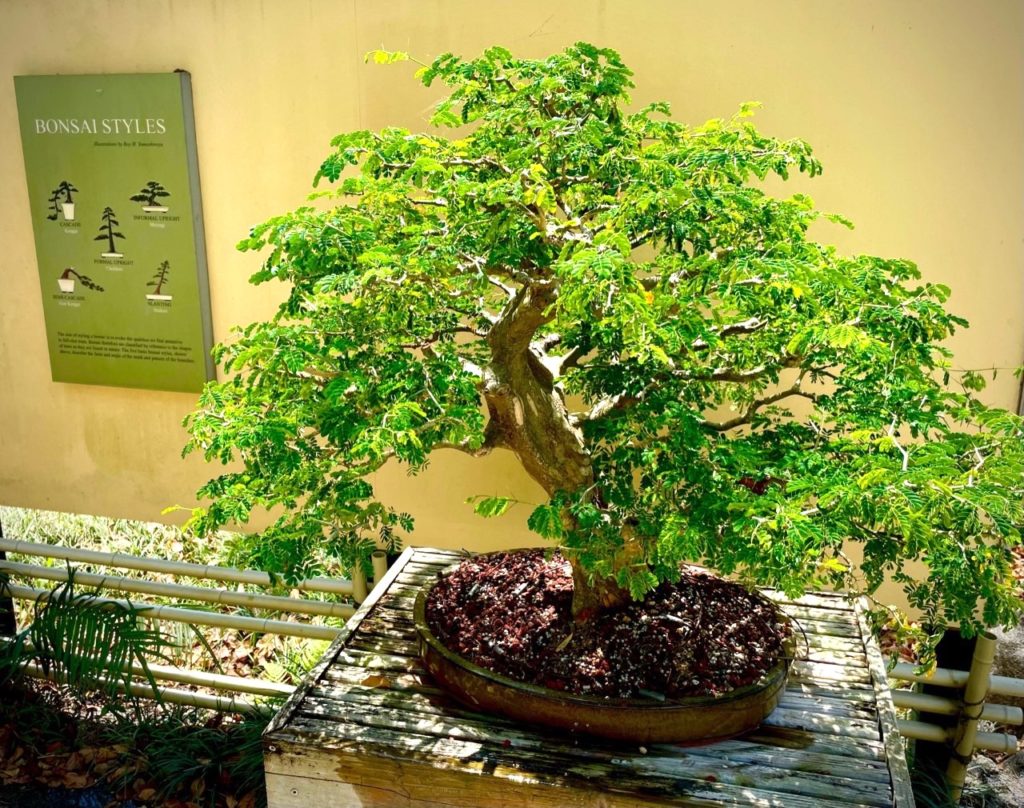
As we left Yamato Island, we met Hotei, the resident god of happiness. This is his spot in the garden. He comes as a surprise to folks walking from the South Gate before they reach the Yamato-kan Bridge. He likes to have his picture taken with folks, so snap away.

Morikami Falls
This is the last stop on the gardens tour. Morikami Falls is dramatic and powerful. This waterfall design uses massive boulders and flowing water in a composition of dynamic tensions. We had come to the end of our journey. It is so calm and serene, I decided to sit for a while and take it in. In Japanese culture, still water signifies a reflection of life, while flowing water represents its continuity. Rocks generally represent stability, although pebbles or gravel can symbolize water.
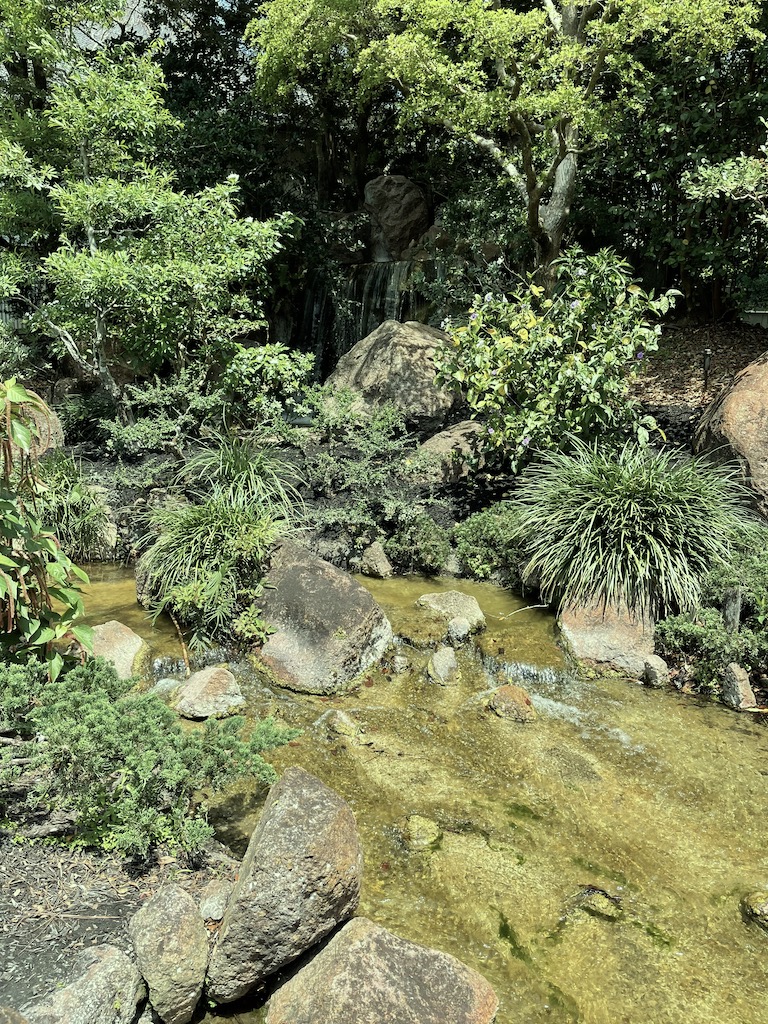
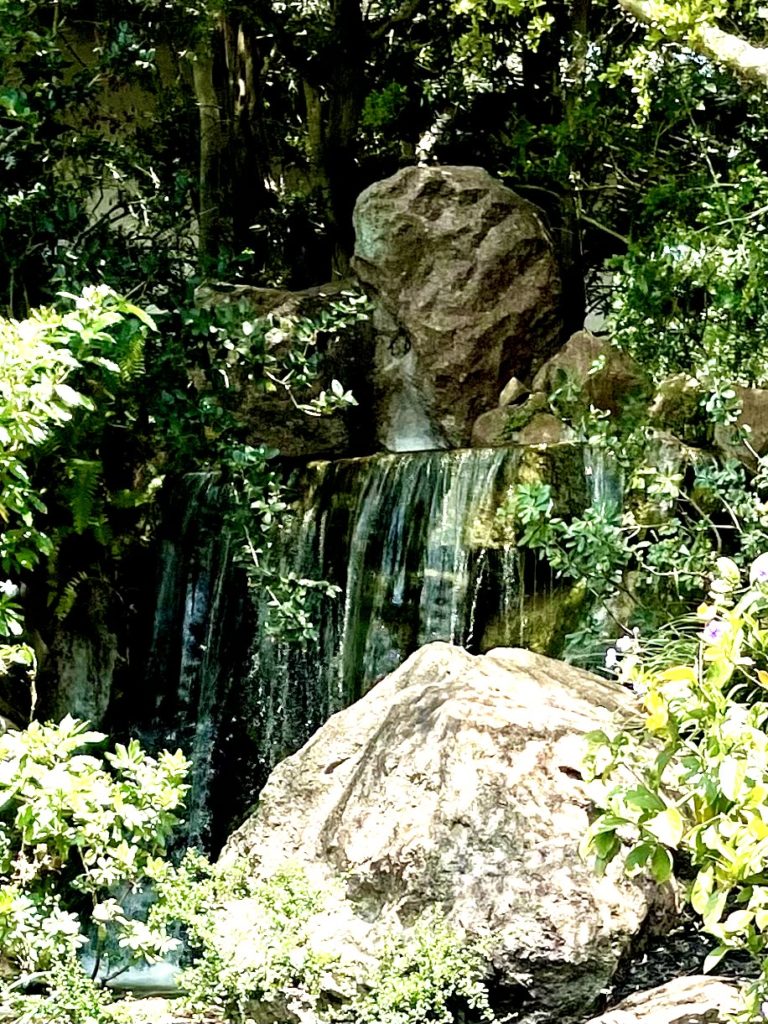
“Strolling through a pine forest or bamboo grove, viewing the rock formations, arrangements of plants, and cascading waterfalls, pausing to ponder the quiet surface of the lake and shoreline – little by little we are encouraged to lay aside the chaos of a troubled world and gently nurture the capacity within to hear a more harmonious, universal rhythm” This is the tremendous power the Japanese gardens at Morikami Park hold for us.” –Hoichi Kurisu, Master Garden Designer of Roji-en

Cornell Cafe
After you have made your way around the lake and through the gardens, you must have worked up an appetite. The Cornell Cafe is the perfect way to end your visit to the Gardens.
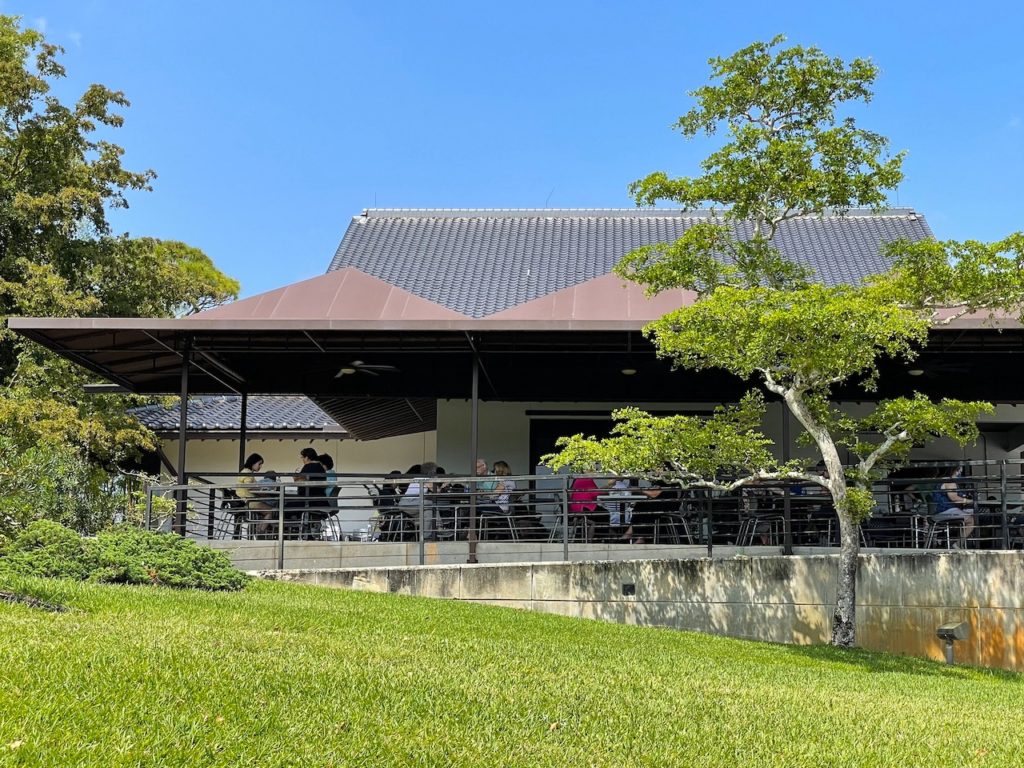
A Garden to be Experienced
Morikami Museum and Japanese Gardens, with its unique gardens and collections, is one of Palm Beach County’s most treasured cultural attractions. Located in a tranquil natural setting, Morikami invites visitors to discover Florida’s heritage and its connection with Japan. While most botanical gardens are intended to provide information about specific plant species, the Morikami Gardens is an authentic Japanese-style garden to be experienced through nature as a whole by becoming in tune with a sense of sound and rhythm, and sunlight and shade.
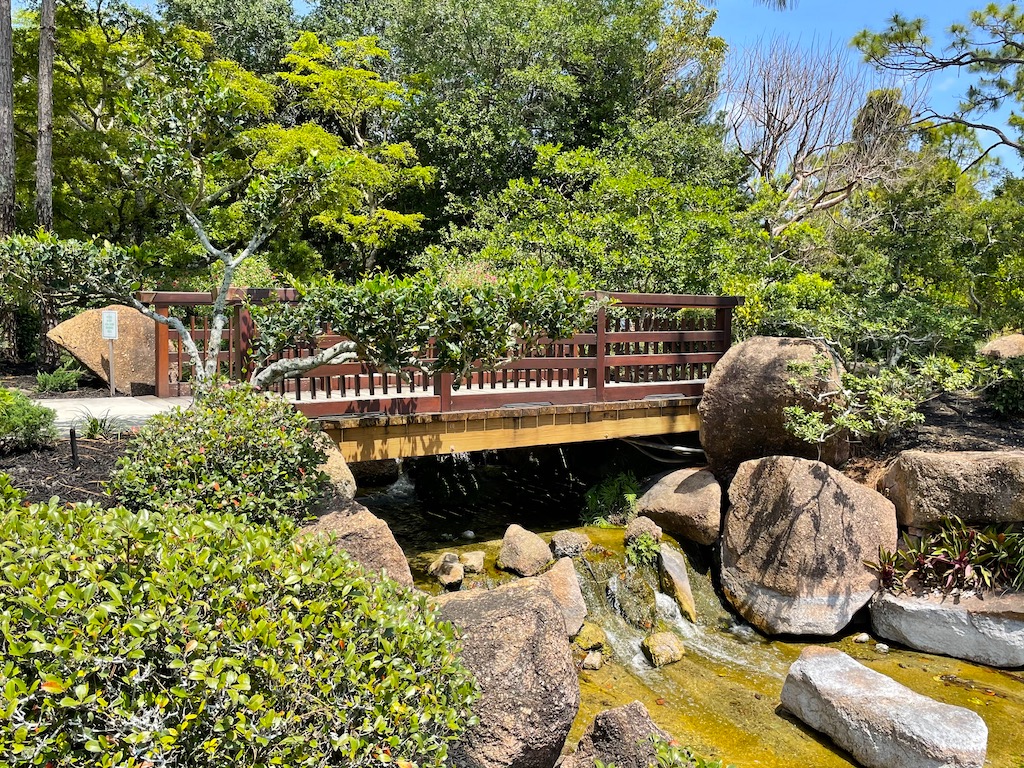
Whether you live in beautiful South Florida or are just visiting, you owe it to yourselves to visit the Morikami Museum and Japanese Gardens in Delray Beach, Florida. Add the Morikami Gardens to your list of tranquil, peaceful places in Palm Beach and Martin County.
When in the area, I also spent a day at Jonathan Dickinson State Park and can recommend it. Click the link to discover my day there.
The Morikami Museum & Japanese Gardens is west of Delray Beach in Palm Beach County, Florida.
4000 Morikami Park Rd.
Delray Beach, FL
Have you been to Morikami Japanese Museum & Gardens? What did you like best? Leave me a comment below and tell me about your memories of this beautiful place.

